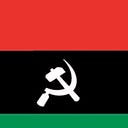Reclaiming Black Saint Louis Part II: Mill Creek Valley: Urban Renewal or Prole Removal?
New Afrikan people live in the midst of a war for our cities. The colonizer bourgeoisie wants us gone so that they can build coffeehouses and million dollar condos over our corpses. So it’s no wonder that we reach for our pistols whenever we hear talk of “Urban Renewal”. On our end this term translates to “population removal”. Mill Creek Valley was a thriving New Afrikan community, nearly two centuries old in the mid 1950s. Saint Louis was home to thriving ethnic neighborhoods at a point in our history. We had the Irish in Kerry Patch, Germans in Baden, and New Afrikans in places like Kinloch (see the first article in this series), the Ville, and by mid-century, Mill Creek Valley. These neighborhoods were once full of benevolent organizations, athletic clubs, and a variety of other community centers organically developed by the masses for their own well being. Saint Louis was also a center of early Marxism and Socialism, again, because of the working class character of these neighborhoods and the fact that the European immigrants that came here (particularly the Germans) retained their revolutionary traditions from the old country and hadn’t been fully bought out and Americanized at the expense of oppressed nations. For the exposition of this process in detail, I recommend J. Sakai’s Settlers: The Mythology of the White Proletariat.
Mill Creek was labeled by many in the colonizer city administration as being a “slum” in the 1940s and 1950s. Students of urban history and city planning with a revolutionary eye know that when city governments start talking about “slums”, they’re referring to a dangerous (to them) class character that they think upsets their apple cart. Slums mean riots, Communism, and class struggle. At the start of the 1950s, Mill Creek was home to 20,000 people, 95% of which were Black. This area hosted the oldest continuing Black newspaper, the Saint Louis Argus (which still exists). It had over 800 businesses and institutions, which employed Black people and provided necessary goods and services in the era of segregation. This, in the eyes of city officials, was a dangerous and toxic thing. The literal eradication of Mill Creek Valley was a process initiated with the assistance of the state and federal government.
In 1951, Missouri Governor Forrest Smith signed the Municipal Land Clearance for Redevelopment Law, which brought state aid to the urban renewal efforts of Missouri’s cities. The law also created the St. Louis Land Clearance for Redevelopment Authority, whose job it was to oversee urban renewal in Saint Louis and manage its funding. Under the 1954 Federal Housing Act — which provided federal aid for renewal projects — and the passage in 1955 of a $110 million bond issue, Mayor Tucker and the City of St. Louis began the clearance and demolition of slums in Mill Creek Valley. Most of the bond revenue went towards construction of new expressways, some of which cut through parts of Mill Creek. Roughly $10 million was utilized for slum clearance. The clearance of the area would involve the relocation of many residents and businesses; most residents would never return and many businesses would cease operations. Acquisition of buildings, like the Pine Street Hotel and the Peoples Finance Building, began in August of 1958, with actual demolition starting the following year. Redevelopment of the area would include new residential, commercial and industrial zones, with the majority of land going towards new industry.
This process, the destruction of Black communities, ways of doing and institutions was repeated in several cities across the country during this era. The new interstates enabled white flight “refugees” to continue to drive to downtown areas to work at their high paying yet useless jobs, while the proletariat, those who poured the concrete, built the houses, and laid the foundations of this glut in prosperity through the 1950s and early 1960s saw their neighborhoods destroyed and gutted. Many ended up in the projects that went up around the same time, places such as Pruitt-Igoe, which were also doomed to be demolished not even 15 years later. This demonstrates the need of revolutionary organizations capable of defending our neighborhoods from colonizer plots to buy up or outright steal our land from under us and secure the class integrity of our communities. Much of what was once Mill Creek Valley is now land occupied by Harris Stowe State University, a HBCU, and Saint Louis University.
